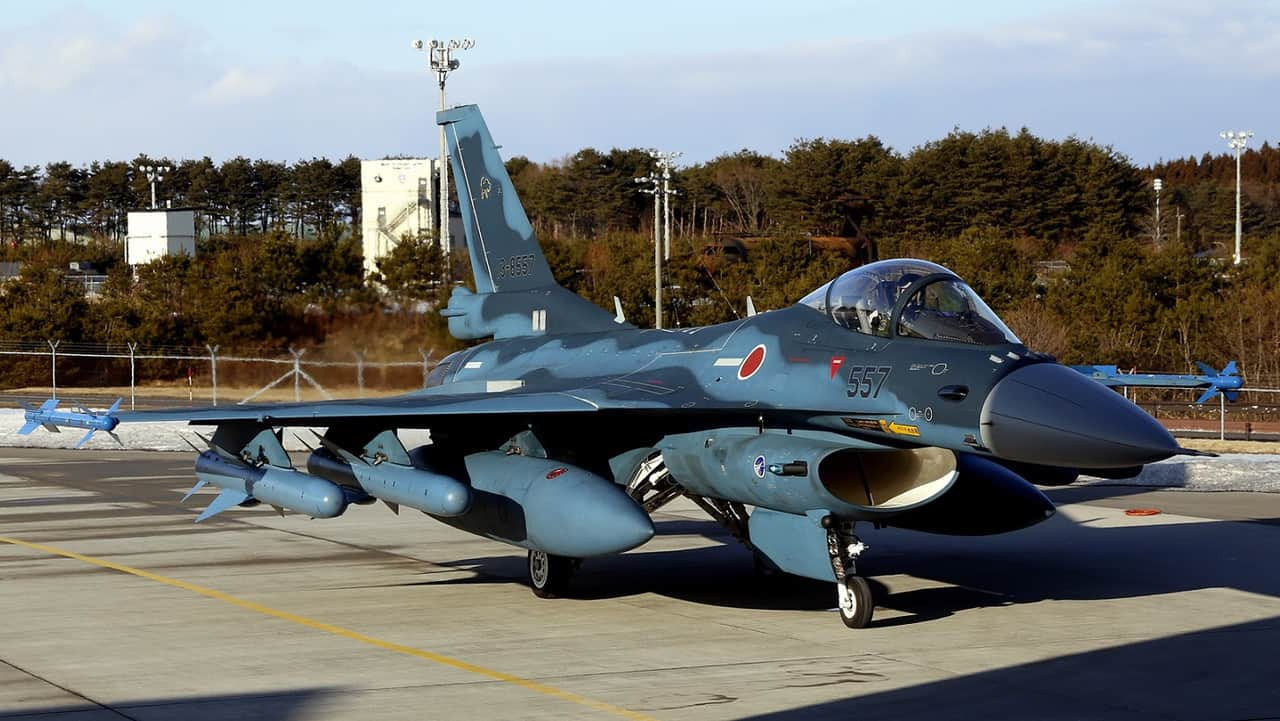
Japan’s Mitsubishi F-2 fighter aircraft is an important component of the nation’s defense policy, merging sophisticated technology with pragmatic requirements designed specifically for Japan’s security situation. The product of a collaborative effort between Mitsubishi Heavy Industries and Lockheed Martin, the F-2 was designed to succeed the aging Mitsubishi F-1 and give the Japan Air Self-Defense Force (JASDF) an able and multi-mission-capable aircraft. Its history provides a glimpse into Japan’s careful approach to military modernization and its desire to have a stable deterrent in the face of changing regional dynamics.

The genesis of the F-2 began in the 1980s when Japan’s Technical Research and Development Institute (TRDI) wanted to develop a fighter that was capable of flying long distances yet remain very agile. As it was difficult to design an entirely homemade aircraft, Japan decided to use the established F-16C Block 40 model as the base, starting the FS-X program in 1988.

This was the first joint endeavor between Japan and the United States on developing fighters, with Japan covering the entire cost of development for its national defense purposes. The resulting plane has a similar appearance to the F-16 but features many modifications to suit Japan’s unique requirements.

One of the highlights of the F-2 is that it has a greater wing area—approximately 25% larger than that of the F-16, enabling it to have larger payloads and execute maneuvers better. Its nose is extended and broadened to accommodate advanced Japanese AESA radars (originally the J/APG-1, subsequently upgraded to the J/APG-2). The canopy of the cockpit is specially constructed with three panels for enhanced pilot vision and stability.

The tailplane and air intakes are also bigger, and the aircraft boasts a drogue chute for reduced landing distances, an unusual aspect among F-16 variants. The F-2 has undergone revisions such as the J/APG-2 radar, which employs gallium-nitride technology for longer range and power, along with improved mission computers and electronic warfare suites over time.

Perhaps most notable of the recent advances, however, are the new missiles introduced that significantly enhance F-2 strike power. Mitsubishi Heavy Industries designed the ASM-3A, a supersonic air-to-ship missile deployed on F-2s. The Ministry of Defense of Japan indicates this missile has flight ranges of 300 to 400 kilometers at more than Mach 3 speeds, which makes it extremely difficult for enemy defense systems to locate and intercept. Its guidance system uses inertial navigation, GPS, and an active radar seeker to target moving ships precisely. It also employs stealth technology and sophisticated electronic countermeasures, enhancing its success rate in the contested environment.

The F-2 also carries the AAM-3, a short-range domestically produced infrared homing missile. With its radical maneuverability at 40G overload capacity and smokeless motor, the AAM-3 is difficult to shake off in dogfighting. Its infrared seeker locks onto heat signatures, and it’s even capable of being used with the F-15J in addition to the F-2. Though Japan’s post-war defense policy has meant the missile doesn’t have any combat experience, it’s a major deterrent and plays an important role in training exercises.

Japan’s strategic emphasis on the F-2 is on maritime defense. Although capable of air-to-air missions, the primary mission of the F-2 is to attack enemy ships and landing forces with its anti-ship missiles. This emphasis stems from the security situation surrounding Japan, which has led to investments in weapons that provide stand-off capability and missile defense, with the F-2 as the vehicle for these investments.

Having close relationships with allied nations is another key element in Japan’s defense strategy. For example, in April 2022, the Royal Australian Air Force (RAAF) successfully conducted its first air-to-air refueling test with JASDF F-2s from a KC-30A tanker aircraft. This achievement strengthens joint training and operational coordination, like Exercise Pitch Black, that reinforces the partnership that supports greater regional security.

Nevertheless, Japan is confronted with the dilemma of reconciling indigenous innovation with reliance on foreign technology. Even though the ASM-3A and AAM-3 are indigenous, Japan still purchases some of the U.S.-produced weapons. This has generated debate on maintaining Japan’s defense manufacturing base.

Japan is working strenuously on the next-generation ASM-3 Kai missile with a view to expanding its range and incorporating AI-driven targeting enhancement. Meanwhile, Japan’s constitutional limits on offensive actions guide how these capabilities are developed, focusing firmly on defense.

Looking ahead, the current updates to the F-2, such as advanced missile integration, reflect Japan’s dedication to a technological advantage in an increasingly dynamic security environment. As emerging threats continue to appear globally, Japan’s realistic approach to supersonic, precision-guided capabilities meets current operational requirements and enhances future deterrence. With advanced avionics, heavy firepower, and interoperability upgrades, the Mitsubishi F-2 continues to be a cornerstone of Japan’s air power—prepared to meet challenges to come in the Indo-Pacific.”.
